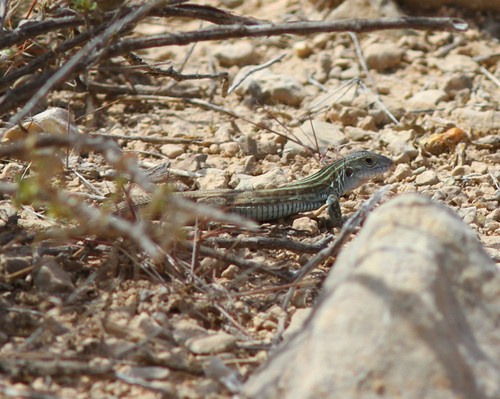Texas spotted whiptail
A species of Whiptail lizards, Also known as Eastern spotted whiptail Scientific name : Aspidoscelis gularis Genus : Whiptail lizards
Texas spotted whiptail, A species of Whiptail lizards
Also known as:
Eastern spotted whiptail
Scientific name: Aspidoscelis gularis
Genus: Whiptail lizards
Content
Description General Info
Description
The Texas spotted whiptail (Cnemidophorus gularis or Aspidocelis gularis) is a species of long-tailed lizard native to the southern United States, in Texas, New Mexico, and Oklahoma, and northern Mexico in Coahuila, Nuevo León, Tamaulipas, San Luis PotosÃ, Querétaro, and Veracruz.
General Info
Lifespan
5-10 years
Diet
Texas spotted whiptail primarily subsists on a diet rich with insects. It has a keen preference for ants, utilizing its tongue to rapidly consume these small creatures. It occasionally consumes seeds and plant material as an auxiliary food source.
Appearance
Texas spotted whiptail is a medium-sized lizard with a sleek, streamlined body covered in scales. It exhibits a variety of colours, from greys and browns to more vivid greens, often accentuated with lighter or darker speckles or stripes along the body. The tail is long and tapering, almost doubling the body length. Males are distinguishable from females by turquoise blue patches on the throat and belly.
Behavior
Texas spotted whiptail primarily exhibits diurnal behavior, typically basking in the sun during the morning hours before foraging for food. Notably solitary, the species does not interact much outside mating season. This species establishes and maintains territories, showing aggressive territorial behavior, especially males during the breeding season. Furthermore, texas spotted whiptail uses camouflage as a survival mechanism in its natural, arid habitat.
Population
Stable
Scientific Classification
Phylum
Chordates Class
Reptiles Order
Lizards and snakes Family
Whiptails Genus
Whiptail lizards Species
Texas spotted whiptail 